Research Highlights – May 2017
RESEARCH HIGHLIGHTS – MAY 2017
Vera Margreiter, University of Innsbruck
Botanical research work comprises a variety of different tasks, from office work and organization to laboratory work and controlled conditions to dealing with difficulties of living organisms and weather in the field. Some parts and phases are arduous, other parts are brilliant and worth all the effort. May 2017 was a month with an extraordinary amount of pleasing highlights in research work.
Scholarly exchange. As the working groups in Pavia (Italy) and Innsbruck (Austria) are both dealing with germination patterns of the genus Saxifraga, a personal discussion on the work procedure, apart from emails, is indispensable. Therefore, I had a visit in Pavia that included content-rich talks, a glimpse into the Botanical Garden and an impression of the oldest University in Italy, which is also one of the oldest Universities in Europe (since 1361).
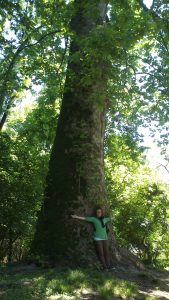
“Scopoli Plane tree”, a century-old tree planted by the well-known botanist in the Botanical Garden of Pavia. |
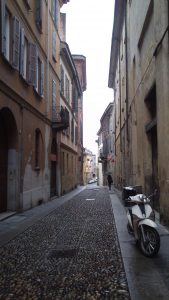
Impression of a street in Pavia, where most streets were built with stones. |
Conference Experience. From 18th – 20th May, the POPBIO2017 (Population Biology in a Changing World) – Conference of the Plant Population Biology Section of the Ecological Society of Germany, Austria and Switzerland | GfÖ) was held in Halle/Saale in Germany (http://www.popbio2017.de/). My supervisor, Brigitta Erschbamer, a master student and I participated this conference. I presented a poster with the field research work of my PhD.
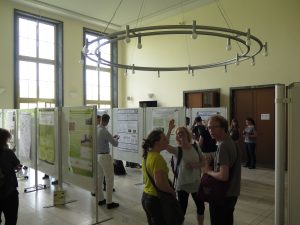
Poster Session at the PopBio Conference 2017 in Halle with Agnes Dellinger (University Vienna) and Niek Scheepens (Chair of the Plant Population Biology Group). |
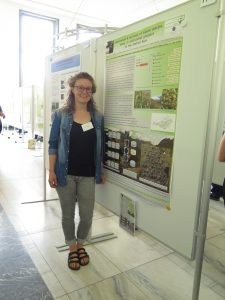 |
Field Work. As the temperature rose quickly in the end of May, snow melted in high altitudes and it was about time to have a look to the lowest field sites (2000 m, 2300 m) in Obergurgl, Ötztal, Austria. Information about the research is available in the section Research on this webpage (http://www.alpineseedconservation.eu/index.php/germination-establishment-and-phenotypic-plasticity-of-alpine-species/). With slightly tension on how the experiment sites would look like after the winter, the setup was in good state and germination of sowed seeds was already visible. First records were done directly and by the end of May, the field summer season started a few weeks earlier than expected.
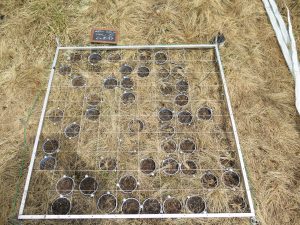
One of the 1 m²-plots (three in total per site) at 2300 m a.s.l. |
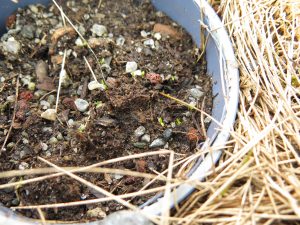
Seedlings of Silene exscapa in a ring with the artificial soil-approach. |